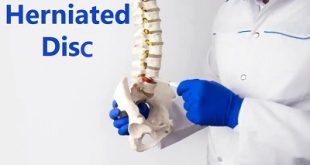Overview
Hypospadias is a congenital defect noted in boys. The location of the meatus (outlet for urine on the penis) is located on the undersurface of the penis rather than on the tip of the penis. Most often this is noted at the time of birth. The foreskin does not completely surround the head of the penis and is deficient on the undersurface of the penis. There can also be some associated bending of the penis, known as chordee. In the mildest forms of hypospadias, the opening is located on the glans (head of the penis). The most severe forms have the opening located between the halves of the scrotum, and the sex of the child may be in doubt.
A variant of hypospadias is the megameatus intact prepuce form (MIP), in which the foreskin is completely formed. This type of hypospadias may be missed at birth and may only be noted at the time of or following circumcision. Other congenital anomalies may be noted to be present with hypospadias, so a thorough physical examination should be conducted at birth.
Incidence
It is one of the most common congenital anomalies, occurring in approximately one in 250 to one in 300 live births. In Europe, the prevalence of hypospadias in the 1970’s and 1980’s has been increasing with no obvious explanation. In the United States, data from two birth defects surveillance systems has shown an unexplained doubling in the incidence of hypospadias. (Paulozzi, Erickson et al. 1997) A U.S. study from the Centers for Disease Control is particularly intriguing because it shows that the incidence of severe hypospadias, not just mild forms, is increasing. This implies that the increase in hypospadias is not due to an increase in surveillance or reporting.
Pathophysiology of Hypospadias
The main pathophysiological event for the development of hypospadias is the anomalous or partial urethral closure in the first weeks of embryonal development. External genitalia development occurs in two phases. The first phase, which happens between the fifth and eighth weeks of gestation, is characterized by the formation of the primordial genitalia in the absence of hormonal stimulation. In this phase, the cloacal folds are formed from mesodermal cells that are aligned laterally to the cloacal membrane. These folds fuse anteriorly and form the structure called genital tubercle (GT), and posteriorly they split into urogenital folds that surround the urogenital sinus and anal folds. The GT has three layers of cells: the lateral plate mesoderm, surface face ectoderm, and endodermal urethral epithelium. The latter is the main signaling center for the development, differentiation, and outgrowth of the GT.
The second phase, which is a hormone-dependent stage is initiated with the differentiation of gonads into testes in males with chromosomes XY. The testosterone synthesized in the testes has two very important functions: GT elongation and the appearance of the urethral groove. The distal portion of the urethral groove, which is called the urethral plate, is defined laterally by the urethral folds and outspreads into the glans penis. The urethra is eventually formed once the urethral folds are fused, and the skin of the penis is formed from the outermost layer of ectodermal cells, which fuses into the ventral aspect of the phallus and forms the median raphe.
Any genetic disruption or alteration in the signaling pathways in the male external genital development and urethral growth may develop different malformation which includes hypospadias, chordee (abnormal curvature of the penis), or abnormal penile foreskin formation.
Types of Hypospadias
The different types of hypospadias are based on the location of the opening of the urethra. Types of hypospadias include:
- Distal hypospadias: includes glanular, coronal, subcoronal, and midshaft hypospadias.
- Glanular: Occurs when the opening is lower than it should be but still on the head of the penis.
- Coronal: Occurs when the opening is at the bottom of the head of the penis.
- Subcoronal: Occurs when the opening is located somewhere near the head of the penis.
- Midshaft: Occurs when the opening is located along the shaft of the penis, close to the middle of the shaft. Proximal hypospadias, which includes proximal shaft, penoscrotal, scrotal, and perineal hypospadias:
- Proximal shaft: Occurs when the opening is located low on the shaft, but not yet at the level of the scrotum.
- Penoscrotal: Occurs when the opening is located where the penis and scrotum meet.
- Scrotal: Occurs when the opening is located anywhere on the front or bottom of the scrotum.
- Perineal: Occurs when the opening is located in the area behind the scrotum and in front of the anus.
What are the causes of hypospadias?
Hypospadias congenital (present at birth). The penis develops during weeks 9-12 of pregnancy, when male hormones instruct the body to form the urethra and foreskin. The urethra starts forming as an open channel and gradually closes over time as the fetus develops. In the case of hypospadias, the tissue on the underside of the penis doesn’t close completely, thus shortening the passageway of the urethra.
The exact causes of hypospadias are unknown, but it is likely caused by a combination of genetic and environmental factors during pregnancy. Researchers from the CDC predict the following findings as increased risk factors for hypospadias:
- The use of assisted reproductive technology/fertility and hormone treatments during pregnancy
- Use of other hormones before or during pregnancy
- Mothers over the age of 35
- Mothers who have obesity
- Fathers and/or brothers of the baby also had the condition
- The baby has a low birth weight or is born preterm
Symptoms of hypospadias
In hypospadias, the urethral opening can be located at any point along the underside of the penis. The location of the opening determines the severity of the condition:
- Anterior (distal) hypospadias: The urethral opening is located near the tip of the penis. This is the mildest form of hypospadias, occurring in about 50 percent of cases.
- Middle hypospadias: The opening is located midway up the penis. This accounts for about 30 percent of cases.
- Posterior (proximal) hypospadias: The opening develops at a boy’s scrotum or perineum. This is the most severe form of the condition, and occurs in 20 percent of cases.
Other signs of hypospadias include:
- downward urinary spray (in older boys with more severe hypospadias, this may mean they have to sit down to urinate)
- downward curve of the penis, called chordee
- “hooded” appearance to the penis, caused by extra foreskin along the top side
- abnormal appearance of the tip of the penis (the glans)
In some cases, boys born with hypospadias may also have undescended testicles, inguinal hernias, or both. Hypospadias doesn’t cause physical pain or block urination, but left untreated, more severe forms can interfere with sexual intercourse in adulthood.
Risk factors
Although doctors aren’t exactly sure what causes hypospadias, there are some known risk factors, including:
- Genetics. You are more likely to have a baby born with hypospadias if another close family member with a penis had the condition too.
- Hormones. Because the penis and foreskin develop in utero with the help of hormones like testosterone, it is possible that environmental factors might affect these hormones and cause hypospadias.
- The pregnant parent’s age. Babies birthed by parents over age 35 are more likely to have hypospadias.
- In vitro fertilization (IVF) and some other fertility treatments. IVF and other fertility treatments may increase the risk of a baby being born with hypospadias.
- Premature birth or low birth weight. Babies born early or with low birth weight are more likely to have hypospadias.
Risks after hypospadias repair may include:
- Wounds break down. The transplanted skin may not take to the new area.
- Urethrocutaneous fistula. A urethrocutaneous (yer-ree-thro-cue-tay-nee-us) fistula is a hole that forms in the skin of your child’s penis and is deep enough to reach their urethra. Pee may leak from a fistula. A fistula may form months or years after a hypospadias repair.
- Urethral stricture. Scarring can narrow their urethra. A narrow urethra can affect how pee flows and create pressure on their kidneys, prostate, bladder and testicles (testes).
- Urethral diverticulum. A bulge in their urethra forms a fluid-filled pouch.
- Shortening of the penis. If you or your child has a hypospadias repair during puberty or post-puberty, their penis may get shorter.
- Recurrent curvature of the penis. Sometimes after a procedure, their penis may return to its previous curved shape.
Complications of Hypospadias
If a hypospadias is not repaired, your child may have problems such as:
- Abnormal urine stream. The urine stream may point in the direction of the opening, such as downward. Or it may spray in many directions.
- Curving penis. As your child grows, his penis may curve. This can cause sexual problems later in life.
- Infertility. If the urethral opening is closer to the scrotum or perineum, your child may have problems with fertility later in life.
How to diagnose hypospadias?
Diagnosing hypospadias involves a combination of medical history, physical examination, and sometimes additional diagnostic tests. Here are the typical steps in diagnosing hypospadias:
Physical Examination:
- External Genitalia Inspection: A thorough examination of the external genitalia is conducted to identify the location of the urethral opening.
- Meatus Location: The position of the urethral meatus (opening) is noted, determining whether it is on the underside of the penis (hypospadias) rather than at the tip.
- Severity Assessment: The severity of hypospadias is often categorized as anterior (closer to the tip of the penis) or more severe forms that are midshaft or posterior (closer to the scrotum).
Medical History:
- Birth and Neonatal History: Information about the child’s birth and any neonatal complications may be relevant.
- Family History: Some cases of hypospadias may have a genetic component, so a family history may be considered.
Additional Diagnostic Tests:
- Ultrasound: In some cases, an ultrasound may be performed to evaluate the anatomy of the urinary tract, including the position of the urethral opening.
- Voiding Cystourethrogram (VCUG): This test involves injecting a contrast dye into the bladder through a catheter, followed by X-ray imaging during urination. It helps assess the structure and function of the bladder and urethra.
Specialized Evaluations (if needed):
- Endoscopy: In certain cases, an endoscope may be used to visualize the urethra and assess its structure.
- Genetic Testing: If there are concerns about a genetic component, genetic testing may be considered.
Referral to Pediatric Urologist:
- Specialist Consultation: A pediatric urologist is often involved in the diagnosis and management of hypospadias. They can provide expertise in surgical correction if necessary.
Early diagnosis is crucial, and the condition is often identified during routine newborn examinations.
Treatment
Treatment typically involves surgical correction, usually performed between 6 and 18 months of age. The specific surgical approach depends on the location and severity of the condition.
- Primary repair: In most cases, a single surgery is performed to reposition the urethral opening and correct any associated curvature. Tissue may be taken from the foreskin or other sources to reconstruct the urethra.
- Staged repair: In more complex cases, especially when the hypospadias is severe or associated with chordee, the repair may be done in stages. This involves a series of surgeries to correct the condition gradually.
- Chordee Correction:If there is associated curvature of the penis (chordee), the surgeon may also perform a correction to straighten the penis during the same surgical procedure.
- Foreskin Reconstruction:If the foreskin is involved in the surgical repair, it may need to be reconstructed to provide proper coverage for the glans.
- Post-operative care:After surgery, the child may require a catheter for a short period to allow for healing. Regular follow-up appointments are essential to monitor progress and address any potential complications.
Graft repair in a distal hypospadias
Prevention
Preventing hypospadias is not always possible, as the exact cause of this congenital condition is often unknown. However, there are some factors that may contribute to a reduced risk or that individuals can consider during pregnancy. Keep in mind that these suggestions are not guaranteed to prevent hypospadias, but they represent general recommendations for maintaining overall maternal and fetal health:
- Prenatal Care: Early and regular prenatal care is crucial. Attend all scheduled prenatal check-ups to monitor the health of both the mother and the developing fetus.
- Avoidance of Certain Medications: Some studies suggest a potential association between certain medications and an increased risk of hypospadias. Discuss medication use, especially hormone-based drugs, with a healthcare provider.
- Healthy Lifestyle: Maintaining a healthy lifestyle during pregnancy can contribute to overall fetal well-being. This includes a balanced diet, regular exercise, and avoidance of harmful substances such as tobacco, alcohol, and recreational drugs.
- Avoidance of Environmental Toxins: Minimize exposure to environmental toxins, chemicals, and pollutants. While the evidence is not conclusive, reducing exposure to potential harmful substances is generally advisable.
- Genetic Counseling: If there is a family history of hypospadias or other congenital anomalies, consider seeking genetic counseling. A genetic counselor can provide information about the potential risk factors and discuss available options.
- Manage Chronic Conditions: Properly manage chronic conditions such as diabetes, as uncontrolled conditions may contribute to an increased risk of certain birth defects.
It’s essential for pregnant individuals to consult with their healthcare providers for personalized advice based on their specific health conditions and circumstances.
 Diseases Treatments Dictionary This is complete solution to read all diseases treatments Which covers Prevention, Causes, Symptoms, Medical Terms, Drugs, Prescription, Natural Remedies with cures and Treatments. Most of the common diseases were listed in names, split with categories.
Diseases Treatments Dictionary This is complete solution to read all diseases treatments Which covers Prevention, Causes, Symptoms, Medical Terms, Drugs, Prescription, Natural Remedies with cures and Treatments. Most of the common diseases were listed in names, split with categories.







